Among the nominees for the Building Award in this category are three impressive schemes for older people – including designs to reduce loneliness – and a live-work-eat scheme aimed at trendy, young buyers, while another puts customer choice centre stage. Ike Ijeh breezes through the shortlisted candidates
Weston Street, London

Architect: Allford Hall Monaghan Morris
Client: Solidspace
Contractor: Bryen & Langley
Submitted by: Allford Hall Monaghan Morris
Located close to the Shard skyscraper, this unique live-work-eat development presents a dynamic new housing typology to appeal to the younger, more trend-conscious residential market. Flats are split-level with interlocking vertical and horizontal spatial volumes clustered around a double-height space that acts as the unit’s main circulation node and houses social spaces such as the living, kitchen and dining areas. Bedrooms are located below or above this, with roof terraces or balconies as the final layer. Materials reflect the pioneering social approach: raw, poured concrete finishes are interposed with oak stairs and handrails.
Signal Townhouses, London
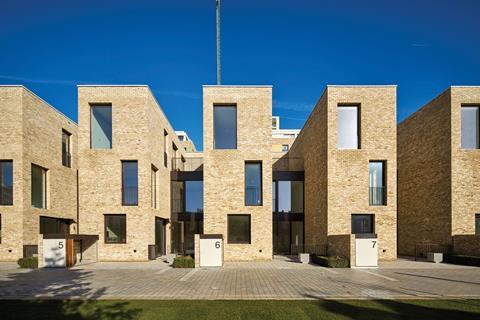
Architect: Allford Hall Monaghan Morris
Client: U+I
Contractor: Weston Homes
Submitted by: Allford Hall Monaghan Morris
This ambitious and creative scheme sets itself the difficult task of trying to rehabilitate a much-stigmatised residential typology: back-to-back housing. The trick is in the floorplan. Unlike historic back-to-back housing, these houses are relatively wide and increase their external envelope (and thereby the opportunities to admit daylight) by incorporating a series of generous setbacks and terraces. The entrance doors are also placed on the lateral facade, freeing the front facade for a large window admitting yet more natural light. Finally, the staircase is located right at the back, ensuring habitable rooms rather than circulation space can be optimised along the light-admitting external walls.
Quadra, London
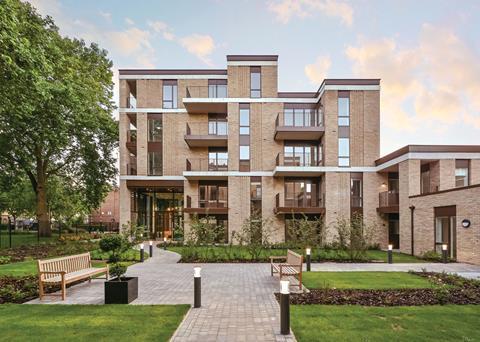
Architect: PRP
Client: Hanover Housing Association
Contractor: Hill
Submitted by: PRP
Design quality in homes for older people continues to go from strength to strength, and this highly accomplished new development is one of the latest examples that shows the transformative effect the various reports by Housing our Ageing Population Panel for Innovation (HAPPI) have had on the sector. Here the architecture responds to its park and townhouse setting by revealing a stone and brickwork facade expressed as a staggered grid with corner balconies. A sheltered and landscaped garden court, which is overlooked by both the park and the residential units, mediates between the built and natural environments.
Moor’s Nook, Woking, Surrey
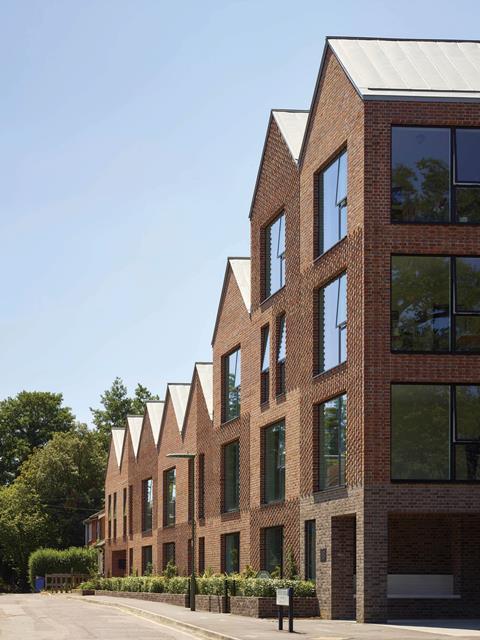
Architect: Coffey Architects
Client: PegasusLife
Contractor: Stepnell
Submitted by: Coffey Architects
Yet another example of high-quality housing for older people, Moor’s Nook succeeds in reconciling two very different types of local context. To a suburban street comprising terraced cottages and a large village green, the development presents a taller, urban edge defined by a smooth brickwork facade and a squat chimney that recalls the site’s former industrial occupants. Yet to the rear the building opens out into a courtyard whose wide, continuous balconies and upper-floor communal area promote a sense of communality and intimacy. Linking the two identities is a roofscape of multiple pitches that allow the scheme to flow seamlessly into the surrounding fabric.
House, Manchester
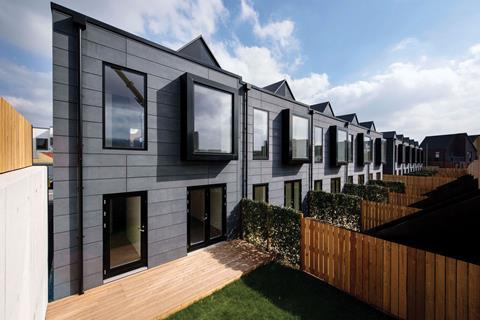
Architect: ShedKM
Client: Urban Splash
Contractor: SIG
Submitted by: Urban Splash
This highly experimental housing scheme seeks to redraw the rules of what customers can expect when deciding to purchase a house. Choice is the key here and the scheme patents an innovative consumer customisation model that essentially lets potential residents choose from multiple internal layout configurations. The secret to delivering this level of flexibility is the wholesale reliance on offsite prefabrication and modular design, both of which allow an unprecedented level of customer choice in defining the finished product. Yet the solution works by adopting elevational forms and proportions rooted in the traditional townhouse aesthetic.
Woodside Square, London

Architect: Pollard Thomas Edwards
Client: Hanover Housing Association / Hill
Contractor: Hill
Submitted by: Pollard Thomas Edwards
This ambitious project takes full advantage of its lush green setting and proximity to local historic landmarks to forge an assured contemporary scheme that nonetheless stays utterly true to both the natural and built heritage of its site. A total of 159 homes are created on a difficult and complex north London site, with 70% of the housing aimed at older people. Despite potential constraints presented by its rich natural setting and the presence of a grade II-listed former hospital wing and two locally listed Victorian villas, the development achieves an impressive density of 240 homes per hectare and forms an imaginative exercise in suburban placemaking.
Hortsley, Seaford, East Sussex

Architect: RCKa
Client: PegasusLife
Contractor: Midas
Submitted by: PegasusLife / RCKa
The third example of housing for older people to appear in this year’s shortlist, Hortsley offers a unique, charismatic and virtuoso take on a thriving residential sector. A challenging infill high-street site is transformed into a calm and tranquil oasis containing 38 dual-aspect flats, each possessing its own private winter garden. The building assumes a crescent shape and extends protectively around a landscaped courtyard garden. Minimising loneliness and isolation are key themes of the project: various degrees of social interaction and intimacy are promoted through the communal garden and the semi-private amenity spaces that are located on each floor.
South Gardens, London
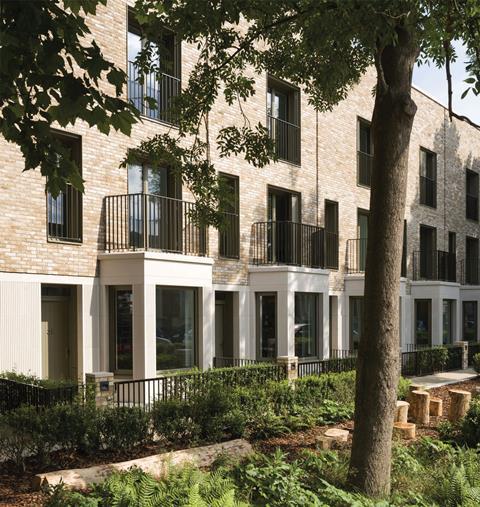
Architect: MaccreanorLavington
Client: Lendlease
Contractor: Lendlease
Submitted by: MaccreanorLavington
The Edwardian mansion block forms the unlikely precedent for the latest phase of the totemic regeneration of Elephant and Castle’s notorious Heygate Estate. South Gardens delivers 15% of the total 2,469 residential units planned across the full Elephant Park regeneration site. It comprises a mixture of three-storey townhouses, seven- to 10-storey Edwardian-inspired mansion blocks and a 16-storey tower, all linked by an ambitious network of soft and hard landscaped public spaces. Amid the well-executed historic and contextual references, real innovation is also demonstrated by the townhouses achieving Passivhaus standard.
Royal Albert Wharf, London

Architect: MaccreanorLavington
Client: Notting Hill Genesis
Contractor: Galliford Try
Submitted by: MaccreanorLavington
The 6.2ha mixed-use Royal Albert Wharf masterplan forms part of the wider regeneration of the historic Royal Albert Dock, once part of the biggest docks complex in the world. Scale remains a defining feature of the development and the scheme will deliver 350 homes in a series of powerfully massed waterside blocks whose simple utilitarian elevations deftly recall the brick warehouse blocks that once crowded the site and which still form such a strong component of its industrial heritage. Interspersed among the housing elements are a series of commercial workspaces and recreational amenities that take full advantage of their waterside location.
Kings Crescent Estate (Phases 1 & 2), London
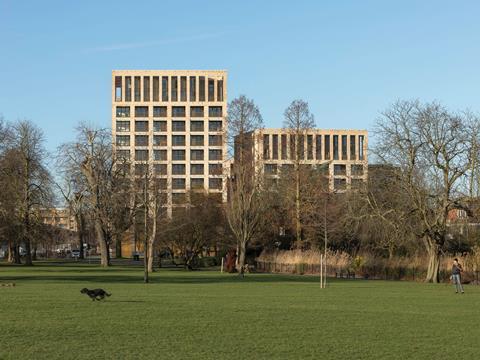
Architect: Karakusevic Carson / Henley Halebrown
Client: London Borough of Hackney
Contractor: Higgins
Submitted by: Karakusevic Carson / Henley Halebrown / MUF Architect/art
This huge scheme seeks to diligently and systematically dismantle a problem housing estate and replace it with an exemplar development that can serve as a wider model for high-quality, tenure-blind estate regeneration. Even more challengingly, the scheme seeks to retain and refurbish selected existing buildings, thereby carefully preserving the strong sense of community that even socially challenged housing estates frequently nurture. In these first two phases, 273 homes have been provided in a series of handsome new brick blocks, and a further 101 have been refurbished. An exemplary public realm defined by planted boulevards and landscaped courtyards has also been created.




























No comments yet